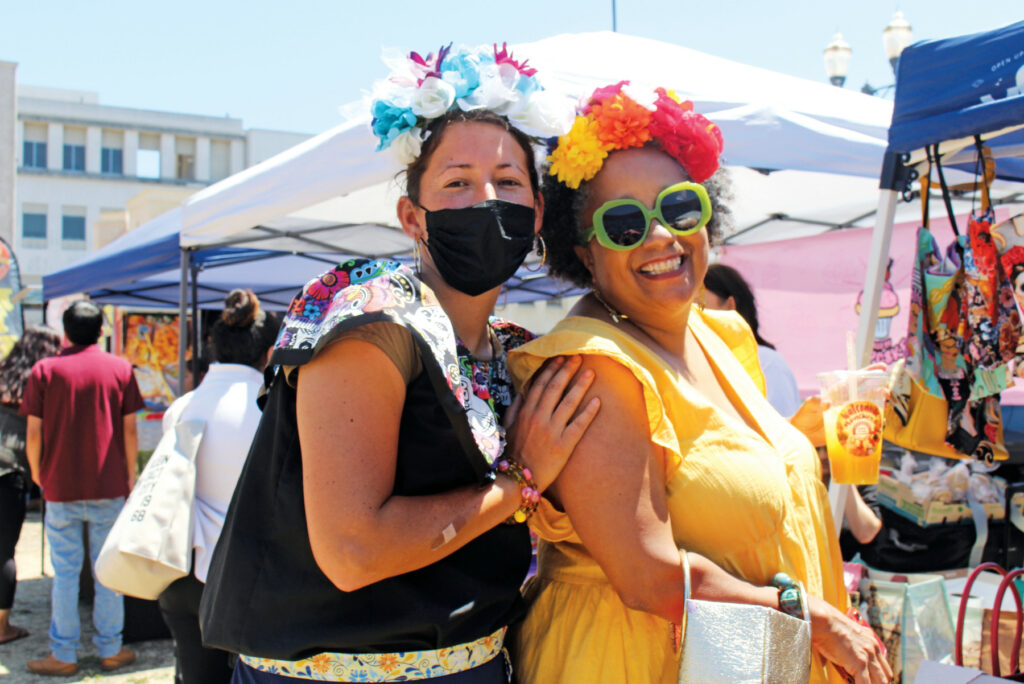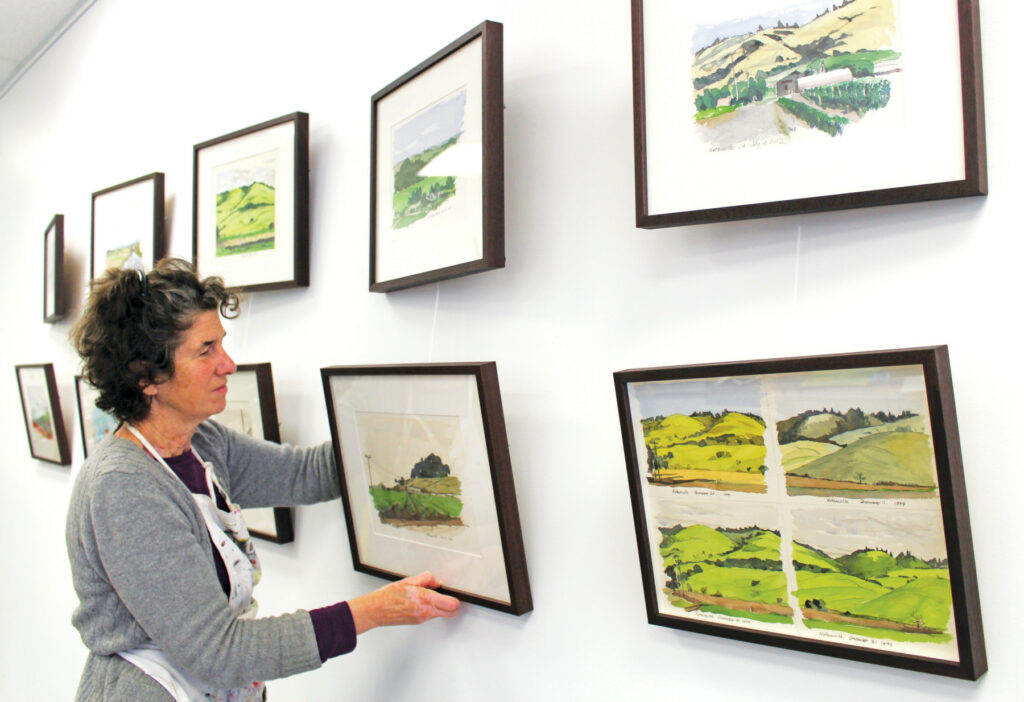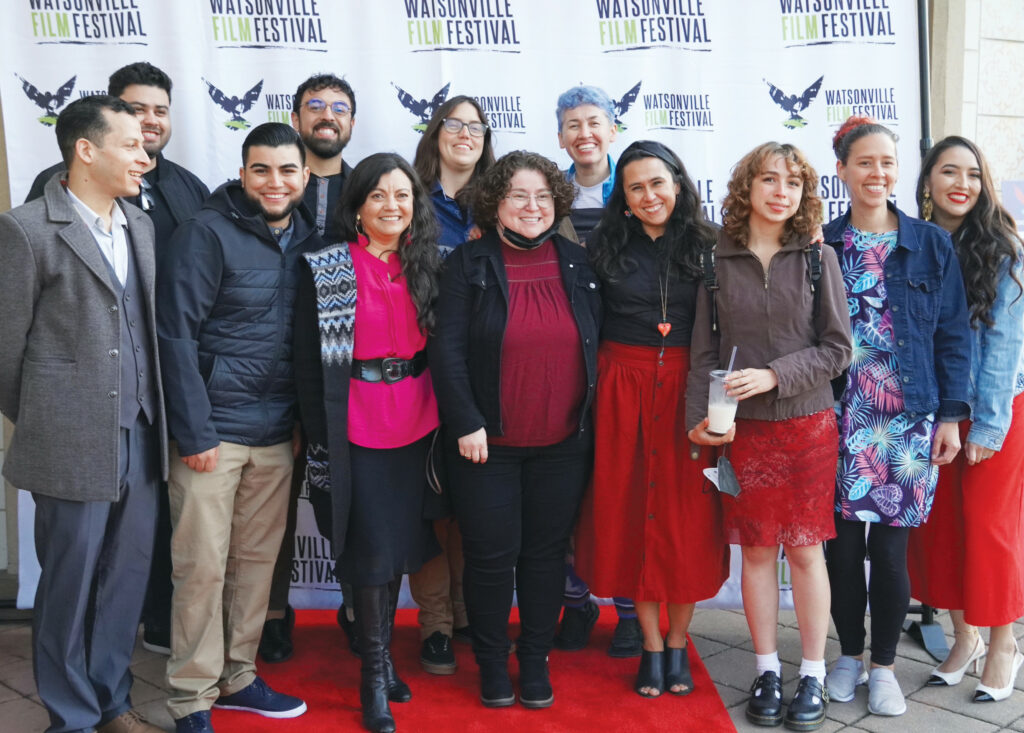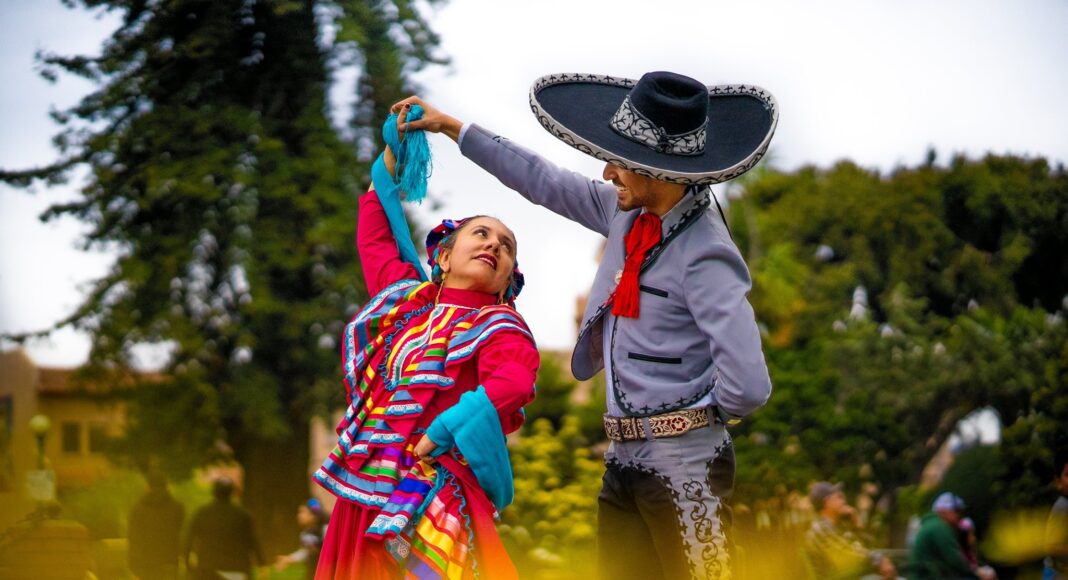On Aug. 20, the historic Porter Building in downtown Watsonville came alive for the first time in more than seven years.
Pajaro Valley Arts (PVA), a nonprofit formed in 1984 to promote and host cultural events in South Santa Cruz County, invited the community to visit during the city’s annual Wine, Beer & Art Walk. The organization had finalized its purchase of the building less than three weeks prior.
“This building, it’s stunning,” says PVA’s Judy Stabile. “The artists were looking around going, ‘look at the brick walls, look at all the hanging space, all the light!’ Even without any major modifications to the building, it’s a beautiful space.”
The Porter Building, designed by famed architect William Weeks and constructed in 1903, has been vacant since 2015 after Ceiba College Prep Academy moved out. In 2019, the City of Watsonville released a request for proposals for its sale or long-term lease.

PVA plans to use the first floor of the building as a visual arts gallery and a small performing venue, and push out one of the walls to create an outdoor patio space. Upstairs will include artist studios, offices and workshop spaces and more.
“Every room has an incredible view of our town, the Fox Theater, the mountains,” Stabile said. “Imagine an artist working in one of these rooms, painting—it’s going to be incredible.”
PVA’s procurement of the Porter Building is one of many ongoing projects contributing to the ever-increasing momentum of art in downtown Watsonville. For decades, artists have been looking for space, funding and general support from the city, county and beyond. Longstanding dance groups had no secure place to practice. Performing venues and exhibition space was limited. And money to fund events was scarce.
But now, after years of work by local advocates, Watsonville is finally making progress. From small, independent art studios to new venues and opportunities for local artists, the arts scene is thriving like never before.
“This didn’t start now,” says PVA director Valeria Miranda. “It’s important to remember that this is the culmination of many hard-working people over a very long time. And now it’s finally blooming.”
Big Changes
Judy Gittelsohn is a local artist who opened her own gallery, Studio Judy G, on Watsonville’s Main Street last year. She says she’s seen big changes happening in the short time she’s been in the community.
“The energy downtown right now is really good,” says Gittelsohn. “Watsonville is a place with so many creative people doing amazing things.”
Gittelsohn’s gallery has so far presented a handful of small art shows and concerts, and hosts weekly art classes. Gittelsohn says that the growth of PVA and other groups has allowed her to be independent.

“I’m in a rare position,” she says. “While PVA is increasingly highlighting more local artists, working with schools, I’m given the freedom to do what I want. I hope this movement continues, with artists seeing more opportunities downtown. This could really become a unique arts district.”
Public events are also increasing. In 2019, local teaching artist Monica Galvan founded Arte del Corazón, a group bringing open-air art markets to various locations throughout the city.
“I’m seeing a lot more happening in Watsonville,” Galvan says. “It’s gone from having something to do once every month to every week. It’s really cool.”
Galvan says she started Arte del Corazón after noticing a lack of diversity in the arts scene. She and other artists joined together to create the first art market at Romo Park across from Watsonville Plaza. The markets continue to gain in popularity, and Arte del Corazón now partners with other local organizations and businesses.
“There wasn’t a huge representation of artists of color,” she says. “There were a lot of artists here, but we didn’t know each other because there was no way for us to meet. We started the markets in a way to ensure that everyone had access, everyone knew about them. Now, people reach out to us.”
Galvan is also part of Arts Council Santa Cruz County’s (ACSC) Watsonville Stewardship Committee for the Arts (WSCA), a group of nonprofit organizers, artists and more who come together regularly to discuss the state of the arts in Watsonville.
“At first, it was just about making one big center,” she said. “But why can’t Watsonville as a whole be a center? I don’t even know how many museums, galleries, theaters there are in Santa Cruz. In Watsonville, we barely have any. I for one don’t ever want to leave Watsonville, so I want to make sure it’s a place for people who want to make art.”
Finding a Home
Two blocks north from the Porter Building, another new arts hub is now up and running. Watsonville Center for the Arts (WCA), located on the corner of Main and West Beach streets, opened this summer. The center acts as a home base for a number of longstanding performing arts groups, education programs, Arts Council offices and more. They have also started to rent out the space for events.
“This is part of the movement for the arts that’s been building in momentum for some years now,” said Mireya Gomez-Contreras, deputy director of ACSC, which will manage the space. “The arts in general, especially here, have been way underfunded, and there’s been little by way of resources. So we’re hoping this can be a hub that brings together artists, and makes visible what the arts truly are for this community.”
WCA has started out as a collective of established dance, music and theater groups. Some have been active in the community for decades but never had a permanent practice space.
“We’ve been in the community for over 40 years without a home,” says Janet Johns, founder and director of folklorico group Esperanza de Valle. “It’s time. Thanks to the Arts Council and Mireya’s leadership, it’s happening.”
Stephanie Dieguez, secretary and board of directors liaison for the White Hawk Indian Council for Children, agrees. The Whitehawk Dancers have also been performing in the community for more than four decades.
“We’ve bounced around town so many times,” Dieguez says. “From school parking lots, cafeterias, the Vets Hall. It’s been tough. When the Arts Council came to us with this idea, it was the biggest blessing ever. To be able to be planted here, in the heart of Watsonville, it’s really exciting.”
Film Fellowship
The Watsonville Film Festival (WFF) organization, while still searching for a permanent space to present its annual festival, is also experiencing major growth. Working with local groups such as Digital NEST and PVA, they have transformed into a year-round organization that not only presents films but also supports local filmmakers and students aspiring to study the craft.
Last year, WFF launched Cine se Puede, a fellowship that supports cohorts of local up-and-coming filmmakers, assisting with funding of up to $1,000 per project. Participants learn to pitch stories and projects, improve proposals, budgets, marketing and more.
Alba, who now also acts as board chair for the Arts Council, says the fellowship has so far been a success.

“It’s really been happening organically,” Alba says. “Our cohorts are a tight-knit group of talented people who support each other, personally and professionally.”
Alba says that programs like Cine se Puede are vital to keeping talented artists in the community. Many filmmakers, she says, tend to move to big cities where there are more opportunities.
“My dream is that we realize the full potential we have in Watsonville,” she says. “I have lived here for 25 years and I have always seen it. But I’ve also always seen the obstacles, from access to funding to finding spaces. I see a big shift now. We need to keep working, pushing and supporting the arts for the long term. We’re just at the starting line.”
Funding Search
Convincing local governments, businesses and residents to invest in the arts has always been a challenge, said Miranda, who is also vice chair at ACSC. But things are shifting in Santa Cruz County, especially in its southernmost city.
“The Arts Council has taken a very thoughtful and serious look at what we need to do to really make sure that we’re being inclusive,” Miranda says. “When we looked at the grant making for the whole county, it had been unfairly heavy with Santa Cruz-based groups, who already have access and connections. This is not only about redistributing money, but also creating resources, like making grant applications less complicated. There are so many barriers we need to address.”
Recently, ACSC invested in an Americans for the Arts survey in order to study the economic impact of nonprofit arts and culture organizations and their audiences, both countywide and in South County specifically. The Arts & Economic Prosperity study is still ongoing, but Alba said they expect the results to be illuminating.
“This is huge,” Alba says. “Even though Santa Cruz County is a known place for the arts, we haven’t been able to invest in it the way we should.”
Both Alba and Miranda highlighted the importance of treating the arts as a crucial economic sector.
“It’s mind-boggling when you see the amount of money that the arts generate,” Miranda says. “It’s time for governments to stop thinking about the arts as a frill, something nice to have but not necessary. This is why this study is so important.”
Other support in South County includes the City of Watsonville’s Percentage for the Arts, a fee requiring developers to pay 0.75% of their estimated total construction costs, with proceeds going into a Cultural Fund the city will use to create a public art.
The city has also supported PVA for years by leasing the organization its current home on Sudden Street for just $1 per year.
“We’ve been incredibly honored by the partnership with the city,” Miranda says. “It’s a big commitment that’s made a world of difference.”
Arts on the Ballot
Arts education funding in Watsonville may also be getting support, as a statewide proposition that will be on the ballot this November could have a major effect on arts in public schools.
Proposition 28, or Californians for Arts and Music in Schools, dedicates $1 billion annually from the state’s general fund to arts and music education in public institutions, without raising taxes. 70% of the funding will be allocated to every public school based on enrollment, and the remaining 30% will be given to schools serving economically disadvantaged students and communities, such as Watsonville.
“It’s so exciting that this might go through,” says Sarah Brothers, arts education director at ACSC. “Arts have historically been underfunded in California schools, especially in districts like PVUSD. They typically don’t receive equitable opportunities.”
Brothers says that Prop. 28 is unique in that it has built-in accountability measures to make sure schools use the funding correctly.
“In the past, schools would be getting a certain amount for the arts, but could still shift things around,” she says. “With this measure, they are required to report how they spend the funding.”
If passed, Prop 28 would be the largest investment in arts education in the country.
“Studies have shown that students, especially those who are disadvantaged, benefit from arts curriculum,” Brothers says. “They are more likely to graduate, not drop out and pursue a degree. The importance of the arts is extremely apparent.”
Drawing an Audience
While adequate funding and resources are vital to supporting the arts in South County, there is also a simple way that residents can help grow and sustain it for the long term.
“People need to come here,” Miranda says. “We need everybody in the county to participate. That is how we can grow sustainability. A lot of people in this county just don’t visit Watsonville. I would be remiss if I didn’t say that sometimes, it goes along color lines. There is definitely racism in this county. But I also hear people say it’s ‘inconvenient,’ which I don’t understand. They will drive to San Francisco to see an exhibit, but they can’t drive 20 minutes to South County on a Sunday? It makes no sense.”
Miranda encourages residents of all areas of the county to get out of their comfort zone.
“You might go to the ballet every year, so why not check out folklorico?” she says. “Try something you’ve never tried before. I guarantee you’re going to be amazed.”














Excellent news! As the piece explains, Watsonville is filled with creative, energetic folks, and they deserve the support. The arts are integral to a richer, deeper life, and should be accessible.